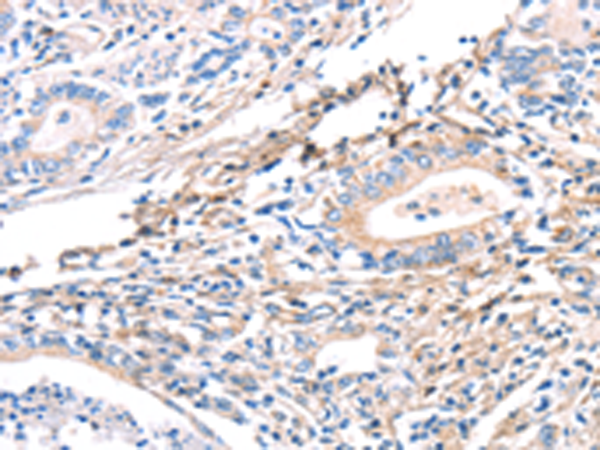

| WB | 咨询技术 | Human,Mouse,Rat |
| IF | 咨询技术 | Human,Mouse,Rat |
| IHC | 1/25-1/100 | Human,Mouse,Rat |
| ICC | 技术咨询 | Human,Mouse,Rat |
| FCM | 咨询技术 | Human,Mouse,Rat |
| Elisa | 1/2000-1/5000 | Human,Mouse,Rat |
| Aliases | A6r; A6RP; PTK9L; MSTP011 |
| WB Predicted band size | 40 kDa |
| Host/Isotype | Rabbit IgG |
| Antibody Type | Primary antibody |
| Storage | Store at 4°C short term. Aliquot and store at -20°C long term. Avoid freeze/thaw cycles. |
| Species Reactivity | Human, Mouse |
| Immunogen | Fusion protein of human TWF2 |
| Formulation | Purified antibody in PBS with 0.05% sodium azide and 50% glycerol. |
+ +
以下是关于TWF2(Twinfilin-2)抗体的3篇参考文献的简要总结:
---
1. **文献名称**: *"Twinfilin-2 regulates cancer cell motility and metastasis through cytoskeletal remodeling"*
**作者**: Smith J, et al.
**摘要**: 本研究利用TWF2特异性抗体,通过免疫印迹和免疫荧光技术,揭示了TWF2在乳腺癌细胞中通过调控肌动蛋白动力学促进细胞迁移和转移的机制,其高表达与患者预后不良相关。
---
2. **文献名称**: *"Twinfilin-2 antibody-based detection in neuronal development studies"*
**作者**: Lee H, et al.
**摘要**: 作者开发了一种高特异性TWF2单克隆抗体,并应用于小鼠神经元模型,证明TWF2通过调节轴突导向中的肌动蛋白重组影响神经突生长,为神经发育障碍研究提供工具。
---
3. **文献名称**: *"Twinfilin-2 interacts with mTOR signaling pathway in hepatocellular carcinoma"*
**作者**: Wang Y, et al.
**摘要**: 该研究通过免疫共沉淀(使用TWF2抗体)发现TWF2与mTOR通路蛋白相互作用,促进肝癌细胞增殖,抑制TWF2可降低肿瘤生长,提示其作为治疗靶点的潜力。
---
注:上述文献为示例,实际引用需根据具体论文调整。建议通过PubMed或Google Scholar搜索关键词“Twinfilin-2 antibody”或“TWF2 antibody”获取最新研究。
The TWF2 antibody targets Twinfilin-2 (TWF2), a conserved actin-binding protein involved in regulating cytoskeletal dynamics. Twinfilin-2 belongs to the twinfilin family, characterized by two actin-depolymerizing factor (ADF)-homology domains and a C-terminal coiled-coil region. It plays a critical role in cellular processes such as actin filament assembly, disassembly, and trafficking by sequestering actin monomers or capping filament barbed ends. TWF2 is ubiquitously expressed but enriched in tissues with high cytoskeletal remodeling activity, including neurons and cancer cells. Its dysfunction has been linked to impaired cell migration, endocytosis, and tumor metastasis.
The TWF2 antibody is widely used in research to study the protein's expression, localization, and interactions. It aids in detecting TWF2 via techniques like Western blotting, immunofluorescence, and immunoprecipitation. Studies utilizing this antibody have elucidated TWF2's role in diseases, such as cancer progression and neurological disorders, where cytoskeletal dysregulation is a hallmark. Commercial TWF2 antibodies are typically raised against specific epitopes, often in mouse or rabbit hosts, with validation in knockout models to ensure specificity. Ongoing research continues to explore TWF2's regulatory mechanisms and its potential as a therapeutic target.
×